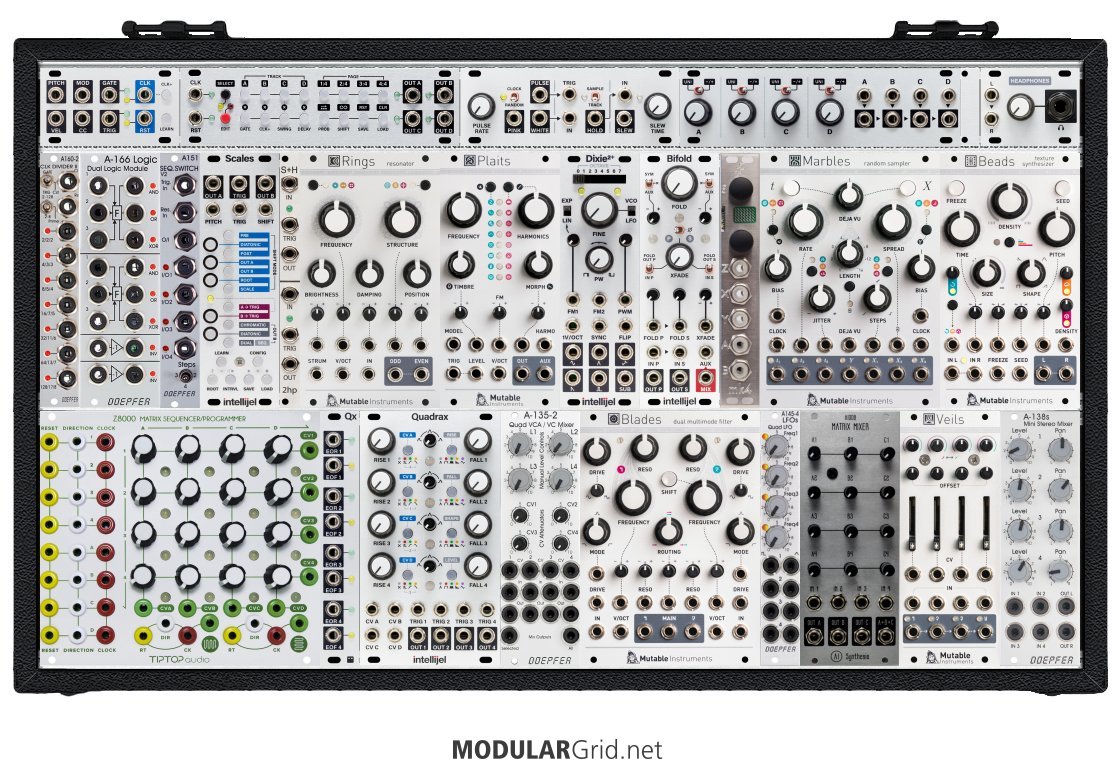For years, I've spent a lot of time with Softube Modular, VCV Rack, Voltage Modular, and AAS Multiphonics CV-1. I love them, but I really want to put my hands on real cables and knobs. I think it’s finally time to make the jump. I’ve been researching and thinking about this carefully for months and I’m starting to arrive at a plan I feel really good about. But I don’t have any experience with hardware, so I need feedback and a reality check before I start spending money.
More context:
I am planning to get the Intellijel 7U 104HP preformance case. Do I need to be concerned about power usage of modules with this case?
I am all about sequencing. I want the option for MIDI input to play along or sync to an external clock, but I’ll often do everything inside the rack with internal clocks and gate / CV sequencers. I want my sequencers to be straightforward, hands-on, and inherently modular, so I can mess around with independent clock rates and resets and boolean gate logic and wiring things together in wacky ways while twisting knobs that always show me their value so I don't get lost. I also like creative limitations. I have a strong sense the Tiptop Z8000 will fit me well as my first CV sequencer, but I don’t know much about the brand.
I love generative/evolving patches and controlled chaos.
Several choices were made to support up to four voices. For example: bass, lead, and two percussion. Sometimes I’ll do mono synths and multi-layer drones. I want flexibility to approach things in many different ways. Hence the two quad VCAs and mixing options.
It's been suggested I put the knobs that I think I’ll use the most on the bottom row for easier access, so I’ve tried to do that (I can only imagine what it will really be like though).
I didn’t get any multiples. I am hoping it’s fine to split triggers once or twice with Tiptop stackcables. How many time can you split gates and triggers that way? What about CV? I know this might be an issue for pitch, but I’ll be using quantizers so I think it’s manageable.
I do not want menu diving. I want this to be an instrument I play, completely unlike the feel of using a DAW or software. The Disting is a huge compromise in this regard, and I’m sure I’m going to get frustrated with it (I’ll print out the manual), but it’s clear there is no perfect rack and something is always going to be “missing”. I feel like the Disting can help me figure out where to go next by trying out different module functions and figuring out what is really missing that I should invest in later (when I probably inevitably buy a second rack to put on top of this one).
I have a ton of other thoughts and lots of questions but this post is getting too long so I’ll stop here. Thanks in advance for any feedback.
My racks: https://www.modulargrid.net/e/racks/view/1921859
My music: https://soundcloud.com/adamodular


